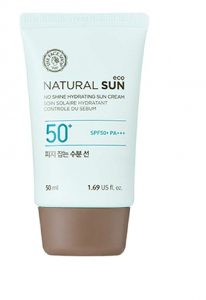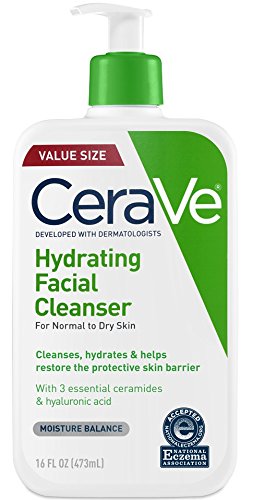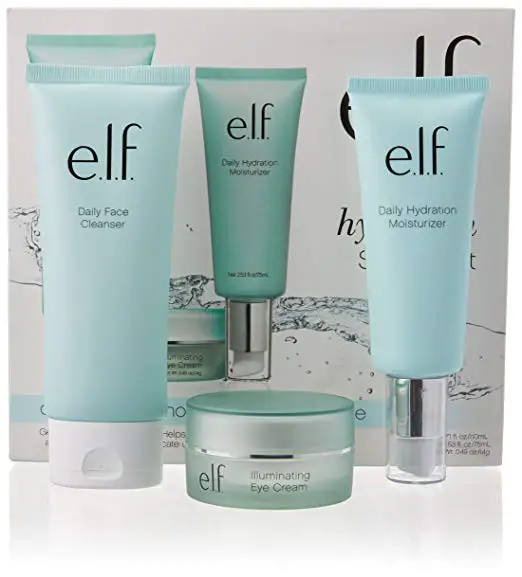The face is a delicate part of the body so needs more care than the rest of the body. One of the many ways to care for it is by using a sunblock face cream.
Seeing as the face is the first place people look at, it is understandable to want to put your best ‘face’ forward. But does it end with just using moisturizers, cleansers and sunscreen? Sunblock face creams are specially formulated to care for the face the way the usual sunscreen cannot.
As we go on in this buying guide, you will understand the important role a good one plays in keeping your face healthy and glowing.
Table of Contents
Why Is a Sunblock Face Cream Essential?
Every day, the sun, which is our primary source of energy, releases heavy amounts of sunlight to sustain life on our planet. As much as we are grateful for this, this does not come without certain consequences.
Alongside the useful energy the sun produces, it also produces ultraviolet (UV) rays. These rays can cause skin cancer, uneven skin coloration, aging signs (wrinkles, fine lines) and so on.
About 90% of the visible aging signs we see on our faces can be attributed to the sun’s harmful rays. This is because the amount of UV radiation that passes through the earth’s protective layer is about 80 percent. This tells us that we need serious protection from such amounts of radiation daily.
There are three major radiations from the sun that damage our skin and health.
UVA
This type of sun radiation is one of the two types of Ultraviolet rays. UVA makes up 95% of the amount of UV rays that the earth receives.
Due to its long wavelength, it possesses the ability to penetrate the skin even as far as reaching the hypodermis. Its wavelength is so powerful that it passes through windows and even thick clouds; so you’re not completely safe indoors.
The intensity of UVA is not based on the season, as most people might think. The sun might not be visible in the winter as in the summer, yet UVA intensity remains the same. Tanning is caused by the effects of UVA rays. It reduces the production of collagen in skin which leads to aging signs in the skin. It also causes skin cancer but not to the same extent as the next radiation type.
[amalinkspro type=”cta-btn-css” ctabtn-id=”” asin=”B00TUHMZU2″ apilink=”https://www.amazon.com/dp/B00TUHMZU2?tag=skincareguide-20&linkCode=osi&th=1&psc=1″ addtocart=”false” new-window=”true” nofollow=”true” alignment=”alignright”]Click Here to Buy on Amazon[/amalinkspro]
UVB
Unlike UVA, UVB has short wavelengths and only affects the surface of the skin. However, this does not mean they are harmless. In fact, they cause the visible skin issues we experience such as skin-reddening and sunburn.
Exposure to UVB overtime can also result in serious skin cancer. Although the intensity of UVA is constant, that of UVB has different levels based on time, season, latitude and altitude
Infrared
Your skin gets assaulted with daily sunlight and 55 percent of that light is infrared. This type of radiation can reach the deepest layers of the skin.
Your face, unlike other body parts that are covered with clothing, is always exposed so proper care is required.
A sunblock face cream will ensure it is well protected from the sun’s harmful radiations by sorting the dangerous UV rays from the sunlight.
But it is important to mention that not all sunblock body cream is good for your face because of formulation. So it is necessary you get a sunblock face cream and not just any sunblock cream.
Types of Sunblock
All sunblock products generally fall into one of the three types of sunblock. The three types are mineral, chemical or synthetic and combination.
Mineral (Physical) Sunblock
This type of sunblock contains titanium oxide and zinc oxide as its major ingredients that protect against the harmful UV rays. They mirror away those harmful UV radiations from the skin by remaining on the skin’s surface.
[amalinkspro type=”cta-btn-css” ctabtn-id=”” asin=”B0037LOQQI” apilink=”https://www.amazon.com/dp/B0037LOQQI?tag=skincareguide-20&linkCode=osi&th=1&psc=1″ addtocart=”false” new-window=”true” nofollow=”true” alignment=”alignright”]Click Here to Buy on Amazon[/amalinkspro]
Chemical (Synthetic) Sunblock
A chemical sunblock has at least a mixture of two of the following: homosalate, avobenzone, octisalate, octinoxate, octocrylene and oxybenzoe. These are usually its main ingredients.
The difference between a mineral sunblock and a chemical sunblock is that the latter is absorbed into your skin unlike the former. When in the skin, it then changes the rays into heat and non-harmful light.
Combined Sunblock
As the name implies, this is a mixture of the two sunblock types that have been mentioned already. It combines the ingredients and the mode of action of both types in either equal or unequal degrees.
None of these types of sunblock is better than the other. However, it is important we give certain recommendations as regarding the sunblock types.
For one who has acne or any skin condition, it is recommended you buy a mineral sunblock face cream. Due to its nature of staying on the skin rather than penetrating, the probability of further irritations is greatly reduced.
As for the chemical and combined sunblock face creams, we recommend them for those who sweat a lot or are always on the go. Using these types will give you protection for longer periods. Since the cream will enter into the skin, the chances of sweating it off are greatly reduced.
Choosing a Sunblock Face Cream
In order to get a sunblock face cream that will offer adequate protection against the sun’s deadly radiation, you may want to consider the following:
Your Skin Type
This is about the most important of all things to consider when going for a sunblock face cream. Your skin type determines what kind will be appropriate for you.
If your skin is dry, then you need ingredients such as lanolin, aloe vera, glycerin to be in your sunblock face cream. Stay away from alcohol.
Those with oily skin will fare better with products that contain isododecane or silica.
Sensitive skin types will do well to get a sunblock face cream that has either titanium oxide or zinc oxide. Your product should be fragrance-free and hypoallergenic in nature. Avoid alcohol at all cost.
Broad Spectrum
A product with broad spectrum sun protection means that such a product has the ability to protect you from both UVA and UVB rays.
Choosing a sunblock face cream that only has SPF protection may mean protection from UVB rays alone.
Ingredients in Sunblock Face Cream
It is essential that you do not pick just any sunblock face cream. Go through the ingredient list to find out what your product contains.
Below are some of the ingredients that are effective in a sunblock face cream…
Avobenzone
This is a classic ingredient that effectively blocks UVA rays. It can also be listed as Butyl methoxydibenzoylmethane.
But despite its amazing results, it has a major shortcoming. When exposed to sunlight, avobenzone breaks down due to its unstable nature. Yet, you can find it in recently formulated sunblock face creams in its stable state.
Ecamsule (Mexoryl SX)
When it comes to voting for an ingredient that can be termed ‘tested and trusted’, then ecamsule will win at the polls. This amazing UVA block has been approved by several regulatory bodies for public use.
However, it can put a large hole in your budget as it is pretty expensive. But if you don’t mind the price, then we strongly recommended it.
Zinc Oxide or Titanium Oxide
These magical twin ingredients have served us in our battle against UVA radiation for quite some time now. Previously, they had the ability to make a user look pale. But this problem has been solved as newer methods of formulation have been discovered.
Vitamin C
If you want to tone and brighten your skin even while you protect yourself from the sun, then you need Vitamin C.
It battles free-radicals which tend to become more active when sunlight acts on them, thereby breaking the skin up.
[amalinkspro type=”cta-btn-css” ctabtn-id=”” asin=”B000GDDKL2″ apilink=”https://www.amazon.com/dp/B000GDDKL2?tag=skincareguide-20&linkCode=osi&th=1&psc=1″ addtocart=”false” new-window=”true” nofollow=”true” alignment=”alignright”]Click Here to Buy on Amazon[/amalinkspro]
Niacinamide
This is a form of vitamin B3 and is helpful in battling breakouts due to its anti-inflammatory ability. Those with acne skin will benefit from this ingredient.
Mexoplex
This patented ingredient is an oil that possesses the ability to improve the stable state of other sunblock ingredients in your product. Ingredients like the unstable form of avobenzone can benefit from the addition of mexoplex.
Aloe Vera
Aloe Vera is also an anti-inflammatory ingredient that helps combat radiation that brings about acne breakouts.
Hyaluronic Acid
This ingredient offers your skin protection from the sun and also hydrates it in the process.
UVB Blocks
The following ingredients are powerful UVB blocks: Homostate, 4-methylbenzylidene camphor or 4-MBC, octyl salicylate or octisalate, homosalate and octylmethoxycinnamate. But they work for UVB rays alone.
UVA and UVB Blocks
There are certain ingredients that offer protection from both UVA and UVB rays. Let’s list just three of such below:
- Benzophenones (either dioxybenzone or oxybenzone)
- Methylene bis-benzotriazolyltetramethylbutylphenol also known as tinosorb M
- Bisoctrizole and bemotrizinol also known as tinosorb S.
Brand
Get a sunblock face cream from a brand you like. That way, you will feel satisfied using it because it came from your preferred brand.
[amalinkspro type=”cta-btn-css” ctabtn-id=”” asin=”B002JGONDI” apilink=”https://www.amazon.com/dp/B002JGONDI?tag=skincareguide-20&linkCode=osi&th=1&psc=1″ addtocart=”false” new-window=”true” nofollow=”true” alignment=”alignright”]Click Here to Buy on Amazon[/amalinkspro]
Steps on Making the Most of Your Sunblock Face Cream
i. Apply your sunblock face cream after your moisturizer but before your makeup
ii. Use a sunblock face cream of at least SPF 15 if you’re NOT overly exposed to the sun. However for long exposure to the sun rays, SPF value of 30 and above is best for you.
Furthermore, if you’re light-skinned or you burn easily, a higher SPF like 50 can be applied. Nevertheless, a broad-spectrum sunblock face cream should be your first choice.
iii. Reapply your sunblock face cream at a regular interval of two hours.
iv. Using an insect repellent can affect the effectiveness of your sunblock face cream. An insect repellent that contains DEET has the possibility of reducing your sunblock result by one-third.
v. Use a sufficient amount. Most people do not use enough of their sunblock face cream and in the end they don’t get adequate protection. One teaspoon measure is the recommended amount to use.
vi. Apply your sunblock face cream when your skin is clean and dry.
vii. Ensure you put it on for about 15 to 30 minutes before you step out.
viii. There is no need to rub it vigorously because most sunblocks penetrate easily into the skin.
ix. Do not use a sunblock face cream that has exceeded its expiry date.
x. Always shake your sunblock face cream before using it.
xi. The recommended temperature for storing it is below 30°. Exposure to heat can reduce its effectiveness.
xii. Incorporate your sunblock face cream as part of your daily skincare routine. This way you will not forget to apply it daily. But remember: moisturizer, sunblock then makeup.
xiii. Apart from using a sunblock face cream, you should also wear hats and sunglasses, and stay in the shade as much as you can.
Caution: Although your sunblock face cream offers a good amount of protection from the sun’s radiation, it is not sufficient. There’s a limit to the protection it can offer.






